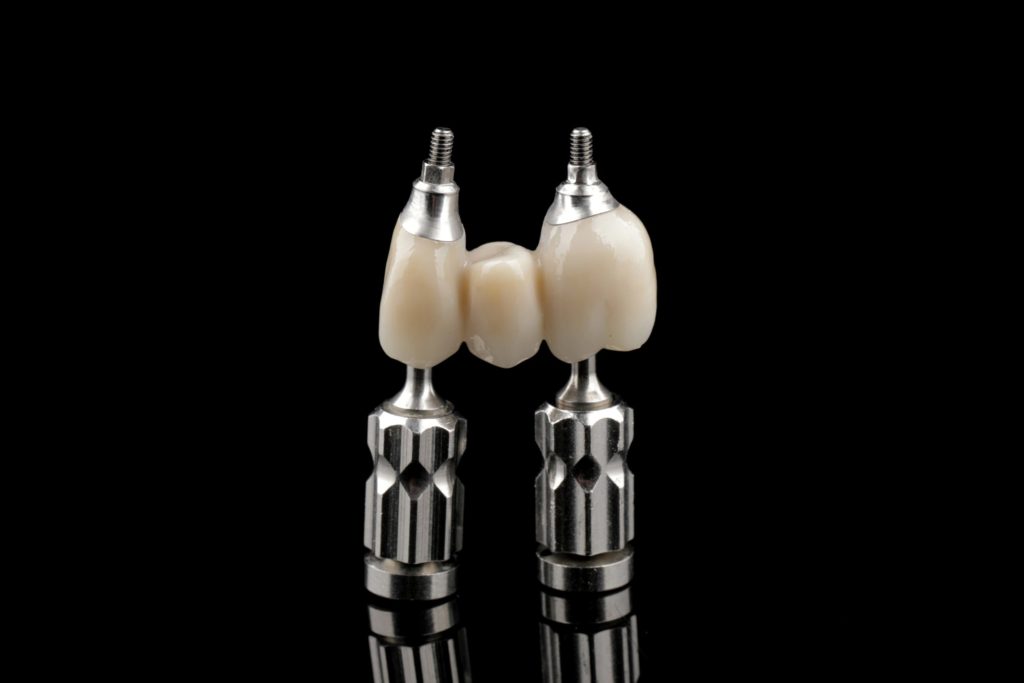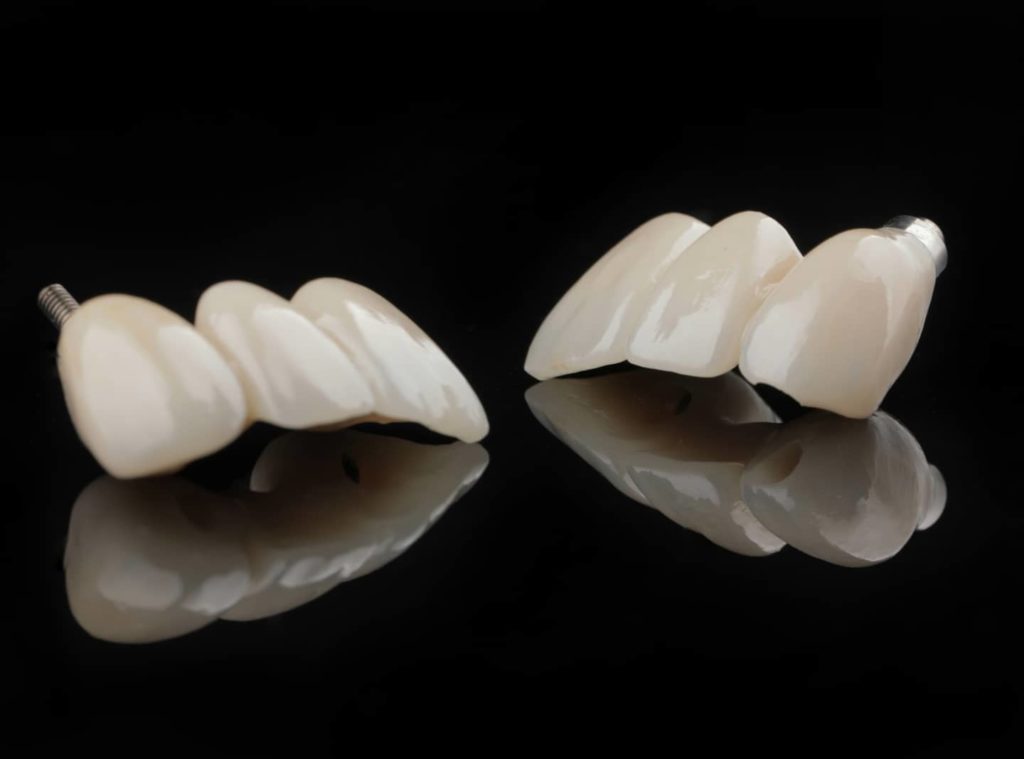27.07.2021
Crowns are prosthetic replacements that aesthetically and functionally replace damaged tooth due to caries, trauma, abrasion or other types of irregularities. When due to the extent of these damages, we may not fix the tooth with fillings, than we need to make crowns that are imitating the shape, tooth size and color. They are fixed to the teeth and the patient cannot remove them. The manufacturing materials of these crowns in modern dental medicine are divided into ceramic metal, zirconia and glass-ceramic.
Metal ceramic crowns are still the most common, primarily because of the price, but also because of the mechanical resistance that allows them to be widely used, from solo crowns to large span bridges. They have a metal base on which ceramic is baked. The positive property of this type of crowns is the strength that ensures longevity with satisfactory aesthetics. The metal base does not transmit light which prevents superior aesthetics and transparency as in a natural tooth.
Nowadays more and more patients look for high aesthetics, thus rarely opting for this type of crown because of the mat finish and metal edge that can sift over time if gums are pulled.
The possibility of an allergic reaction is very small as nickel is expelled from most metal alloys, but still exists in relation to more modern materials.
Technological advances have enabled zirconia crowns to almost completely replace metal ceramics as the “gold standard” in dentistry. The popularity of these crowns is due to its exceptional strength, biocompatibility and superior aesthetics, so it is not surprising that the price is twice as high as metal ceramics. The solid white zircon base partially transmits light, thus more successfully imitating transparency of the natural tooth. Using CAD CAM technology, an intraoral scanner creates a precise jaw model resulting in prosthetic work to which the patient gets used faster and easier, and because of the smoothness and luster of the crown less food accumulates. The therapy is more comfortable for the patient, the possibility of error is minimized and the wait for the final product is shorter. Despite many plus sides, zircon crowns are still not the material of choice for large span bridges due to a smaller number of teeth abutment.

Glass-ceramic crowns have the best aesthetic properties. They transmit light to the same extent as natural tooth structures making them an ideal choice of material for solo crowns or veneers of the anterior teeth when it is necessary to completely imitate the appearance of adjacent teeth. Lack of solid metal or zirconia base also means that this type of material is not suitable for strong chewing forces, patients who press their teeth, larger dental bridges, etc. Their price is similar to the price of zirconia crowns.
The difference between the mentioned crowns is a question that patients often ask. All of these can completely rehabilitate damaged teeth and achieve good aesthetics, but the price shows a large differences. Every patient is different, so the outcome of the therapy and patient satisfaction depends primarily on the good and open communication between the dentist and the patient. During the consultation it is important that the patients states his/her priorities, whether it is a matter of superior aesthetics, the ability to chew, restore the function of speaking, the earliest possible completion of therapy or the financial aspect. The dentist can thus, after a detailed examination of the oral cavity, select the material of choice for the patient, which will surely result in a beautiful and healthy smile.
